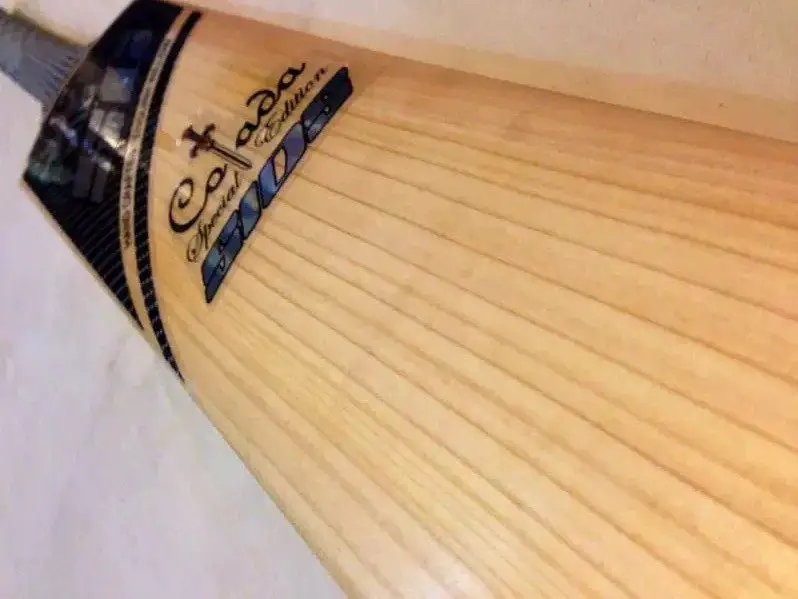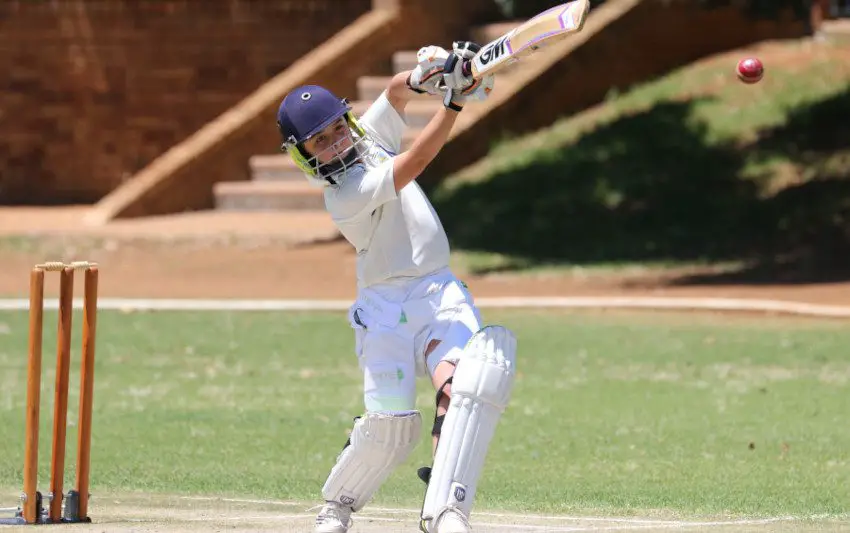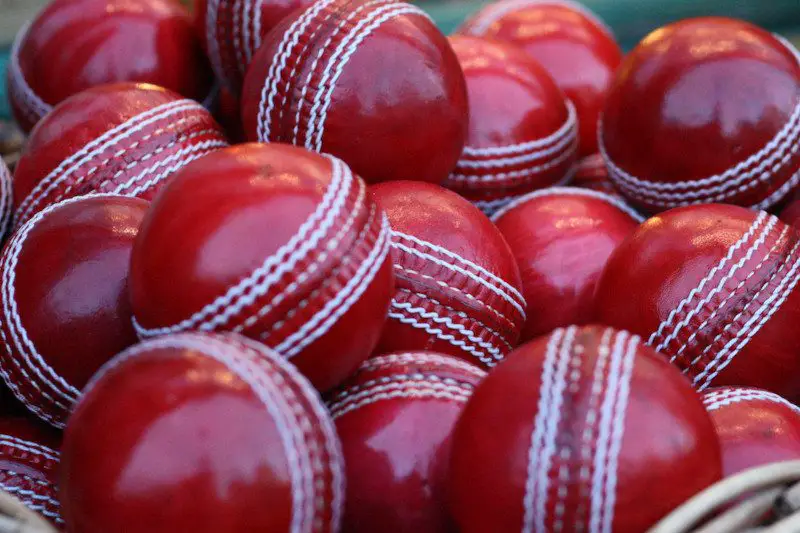Table of Contents
A cricket bat is made from natural wood and there are lots of different components. In this article, I’m going to take a close look at the grains on the bat.
What are Grains on a Cricket Bat?
Grains are vertical lines on a cricket bat. They are clearly present and should be visible to the naked eye.
These are natural and all part of the ageing process. Every grain on the bat represents around a year of growth behind the wood that has gone into making it.
How to Count the Grains on a Cricket Bat?
All grains should be visible without the need for magnification. However, some are very clear while others tend to blend in with the wood.
The best way to count the grains is to place the bat horizontally on its side. Place the bat under a light source. You should now be able to see vertical, straight lines. These are the grains of a bat.

Grains on a Kashmir Willow
I’ve written a detailed study of Kashmir willow and it’s worth checking this in greater detail. Although a small number of top batters have used it, Kashmir willow is generally cheaper and of inferior quality.
The grains on a Kashmir willow cricket bat tend to be much thinner. They can also intersperse with each other. For that reason, they are very difficult to count. This type of willow has its advantages but a long life isn’t one of them. You can attempt to count the grains on a Kashmir bat but their presence may not make too much difference to the quality.
Grains on an English Willow
The grains on English willow bats are much easier to spot. You may have to put the bat under a light to count them, but they should certainly be more pronounced than their Kashmir counterparts.
They should also be wider and straighter.
It’s all about personal preference and one of the clear advantages of Kashmir willow is the lower price. However, the better quality lies in traditional English willow and the clearly marked grains are a good indicator of that.
How Many Grains are Good?
Remember that each grain on a cricket bat represents around a year of growth for the tree that produced it. The number of grains on an English willow bat can vary greatly.
When you pick up a bat in a shop, it could have a wide range of grains from around four to five at the lowest point, up to 12 to 15 as a maximum. But what is the optimum amount of grains on a bat?
Best Amount of Grains
As a general rule, the more grains on a bat, the better it will perform. If the grains are towards the lower end of the above scale, it will need more time to mature.
If the bat is in the higher end of that scale, it may be at its peak performance already. However, this is a general rule and it can depend on a number of factors.
More Grains Means Better Bat Performance and Better Quality?
Willow trees are natural elements and mother nature doesn’t always follow the rulebook. Some trees take much longer to grow than others.
For example, a tree could take 11 years before it reached the point where bats can be produced from it. It has matured slowly and should have 11 grains which sounds like a good thing.
However, wood that has taken longer to grow will have denser and more compact fibres. The wood will be hard and will not require so much knocking in. The issue is that the wood will also be more brittle and it could break more easily.
You could ask the seller about the age of the bat but they may not always know the answer.
This is why professional cricketers will have bats that have already matured with a higher number of grains. They are at their peak performance and, if they break, it isn’t such a problem.
Let’s face it, a pro cricketer of a high standard will have a bat sponsor in place. They will have a number of bats in their bag and they can afford to have some of them break during a season.
For the regular club cricketer, this isn’t an option when bats cost hundreds of pounds. It may therefore be better to buy a bat with fewer grains and to allow it time to mature.
In summary, it isn’t an exact science: More grains may well be an indicator of better quality but this isn’t, necessarily, a guarantee.
Narrow Grains vs Wide Grains
Does the width of those grains make a difference? Narrow grains on a bat can be an indicator of that slow growth. The wood has taken longer to mature and it may be brittle enough for the bat to break within a short period of time.
Wider grains suggest that the bat may take longer to reach its peak performance. You could therefore find that power and timing may not be there while that maturity continues at a slower pace.
In short, the grains on a bat should neither be too short nor too wide. That’s not an easy thing to measure but a good quality bat will have somewhere between six and twelve grains. The width of a cricket bat allows for that range of grains to slot in naturally. Any more indicates that the grains will be too thin, while grains lower than six suggests that they are too wide.
Conclusion
The question of grains on a cricket bat is one that many of us may not have considered in the past. When I started playing cricket it was about looking at the surface and seeing if there were any blemishes but clearly those grains are very important.
In general, the more grains the better but remember that the wood will continue to mature. Having a bat with fewer grains doesn’t mean that you won’t be able to score many runs with it.
As a club cricketer, it’s all about balancing quality with affordability. Remember the advice about grains when you look to make a purchase, but continue to stay within your price levels as you look to buy the best bat that your budget will allow for.


